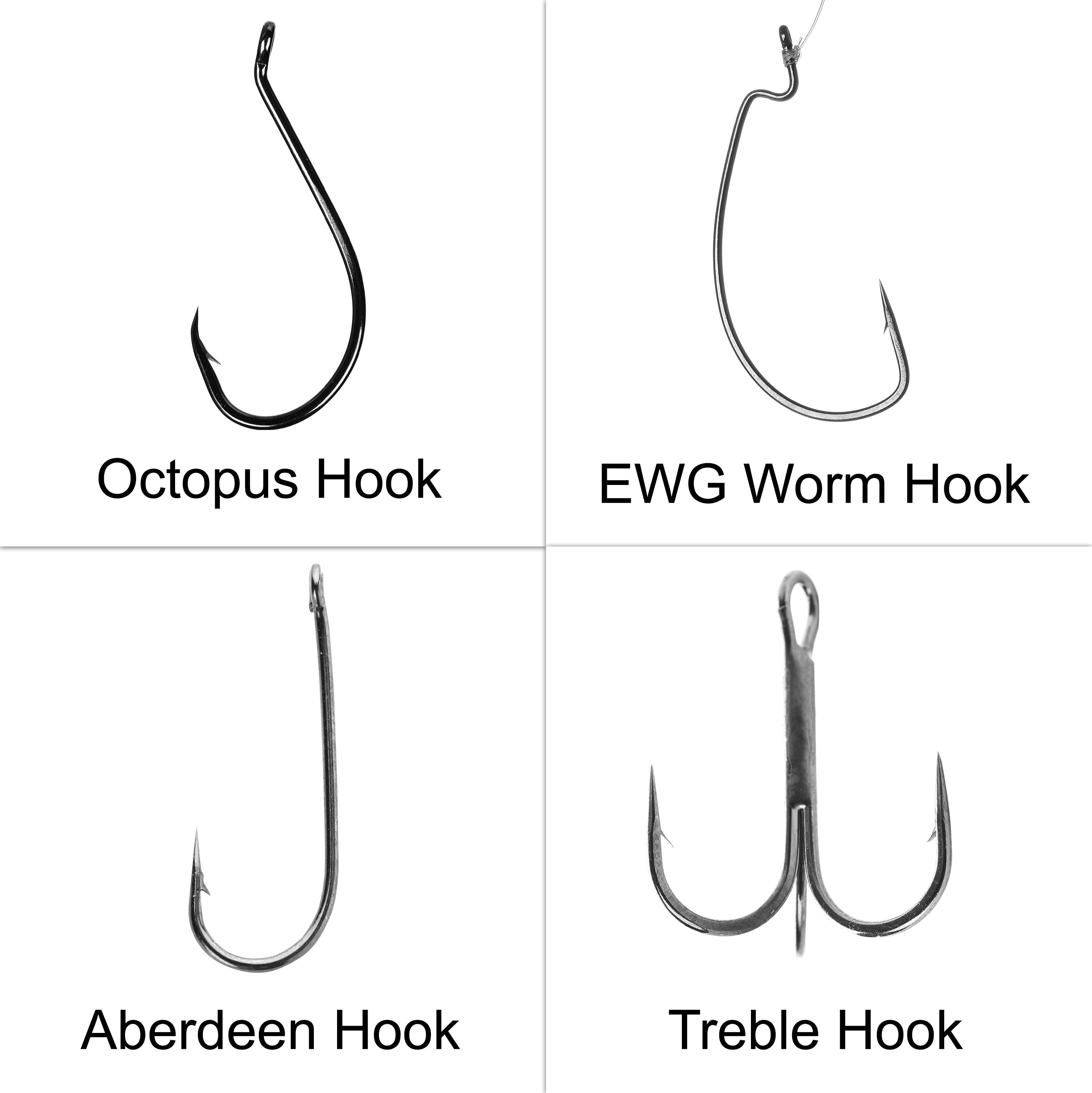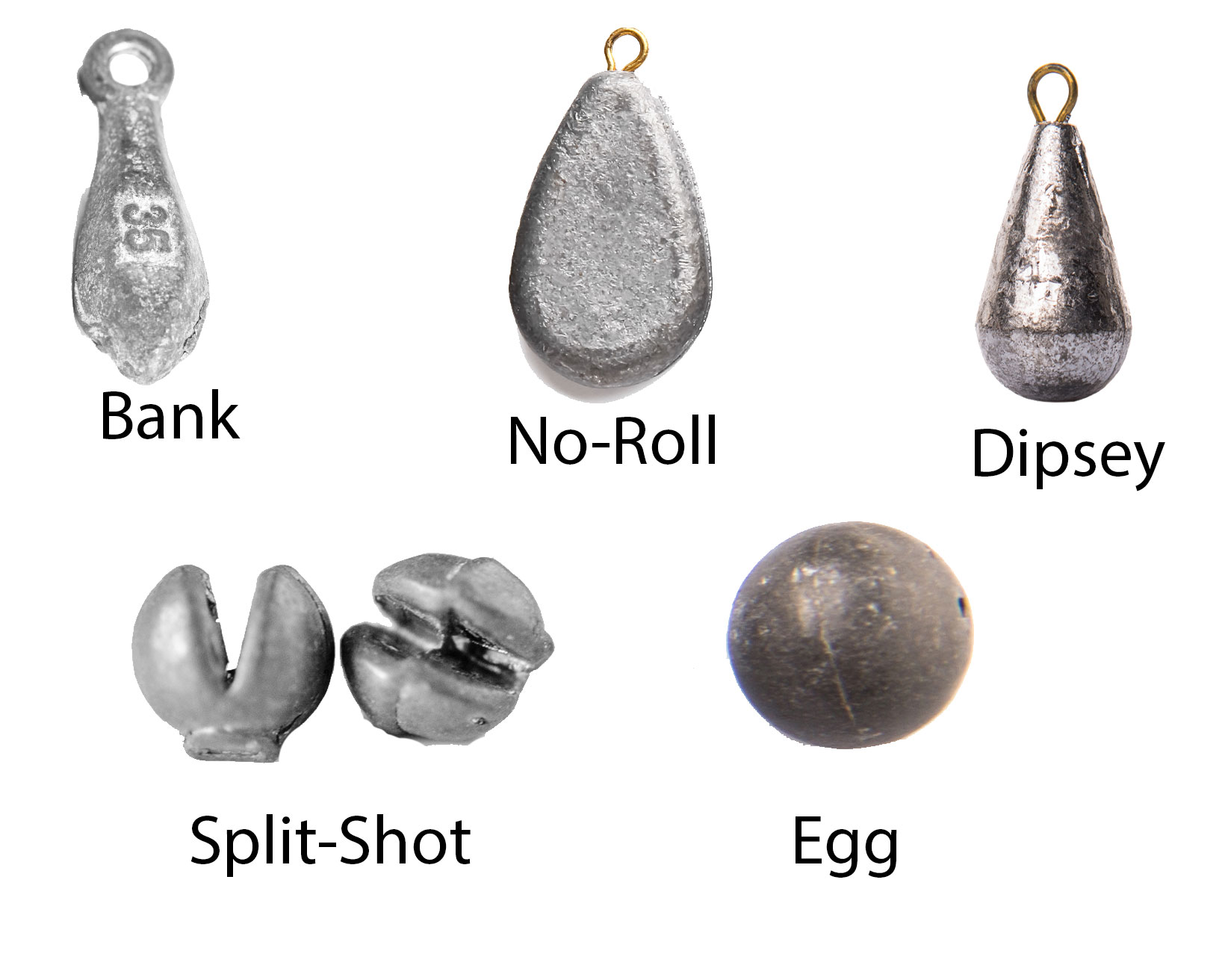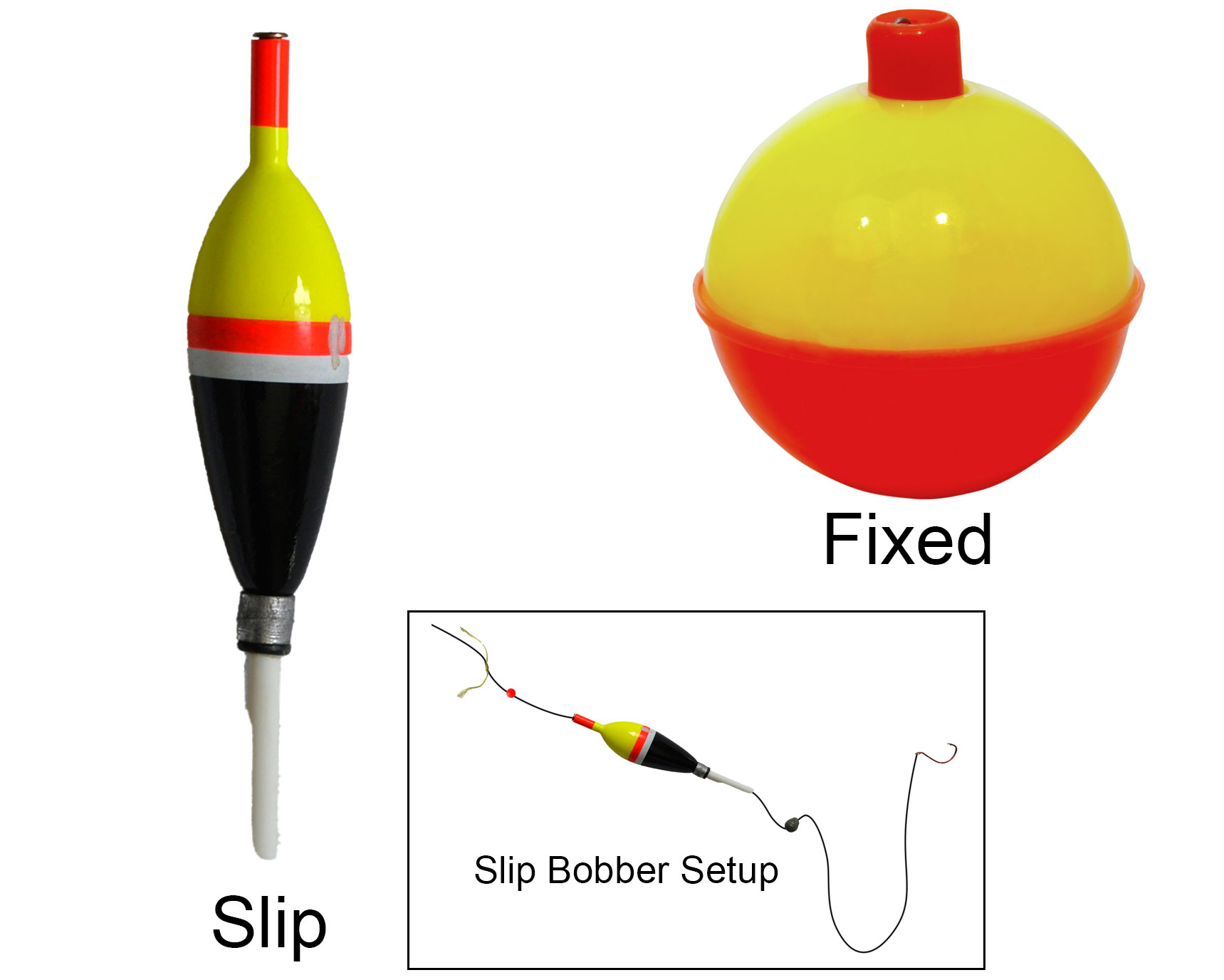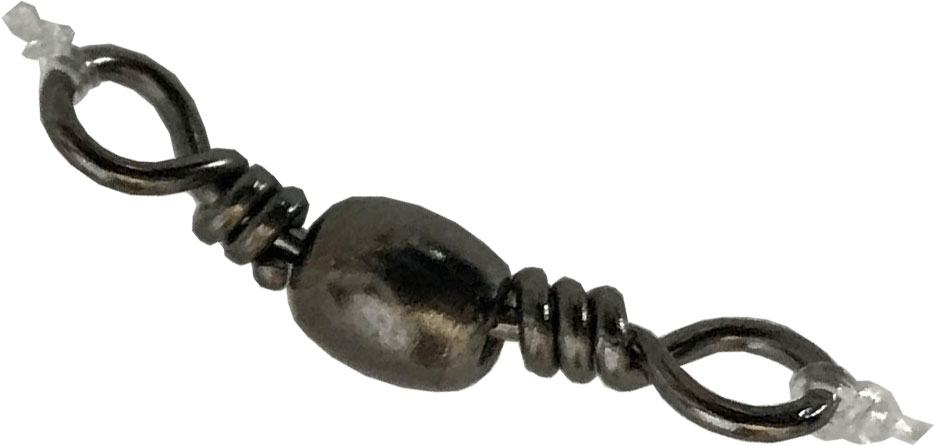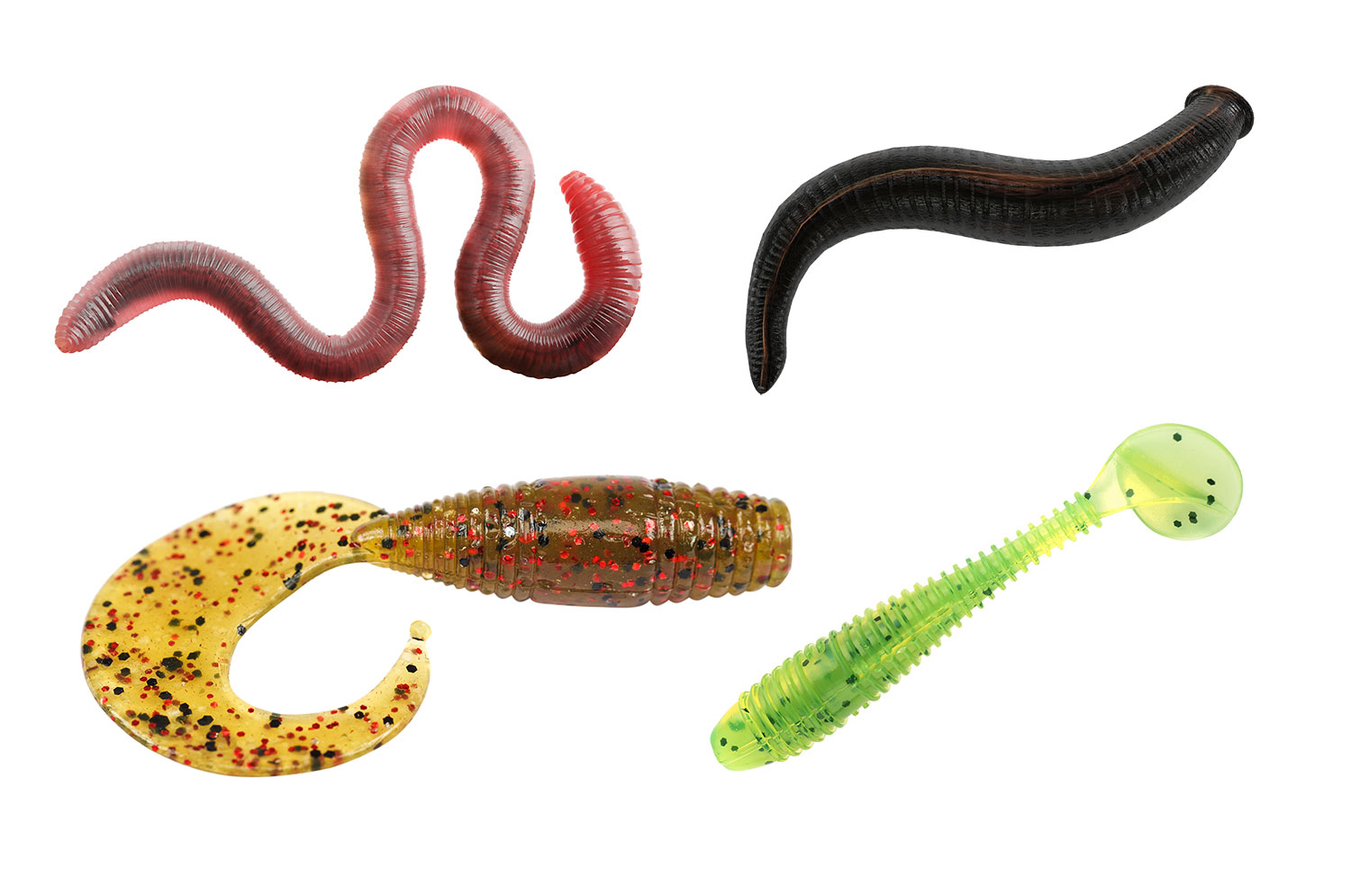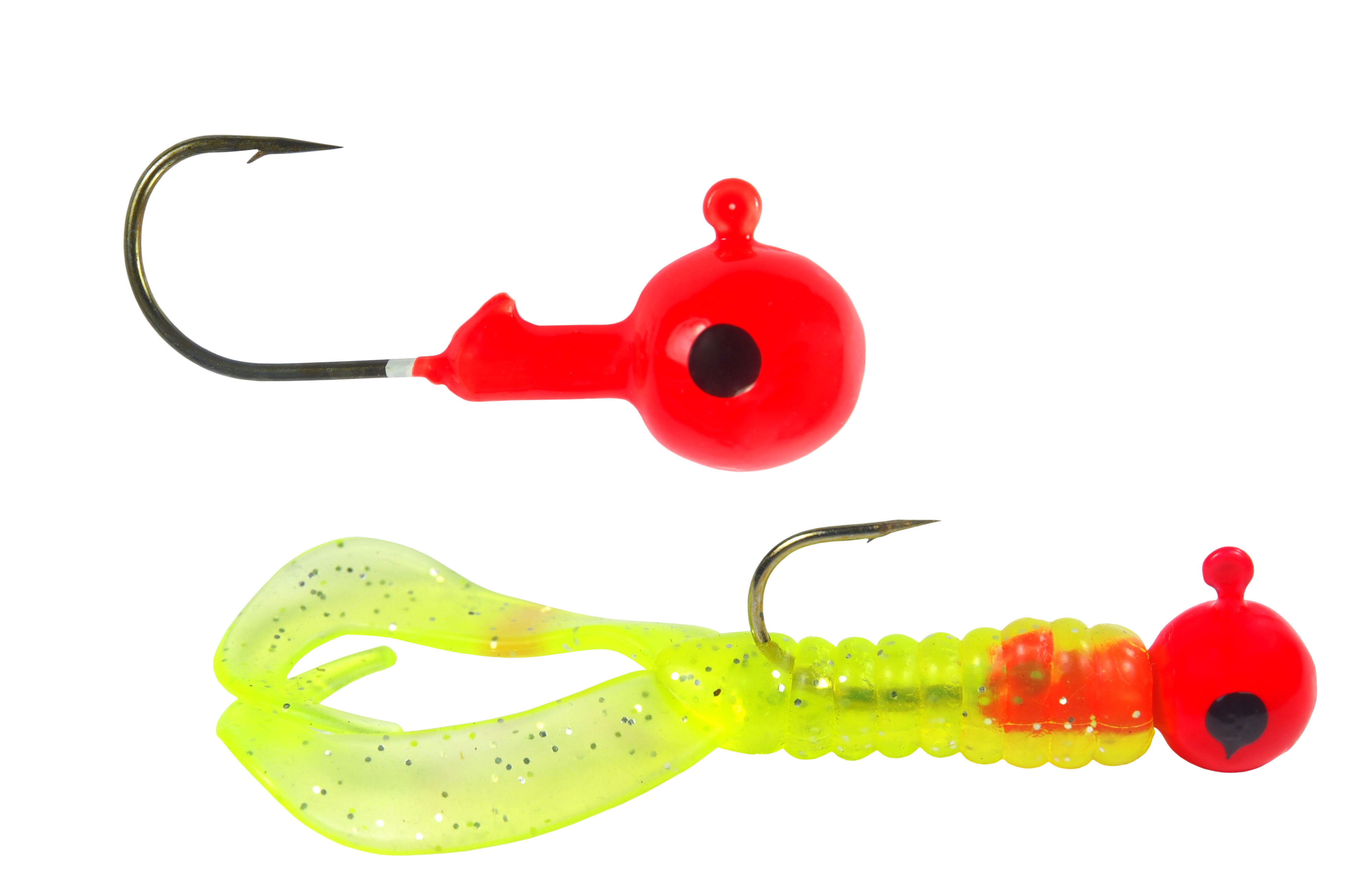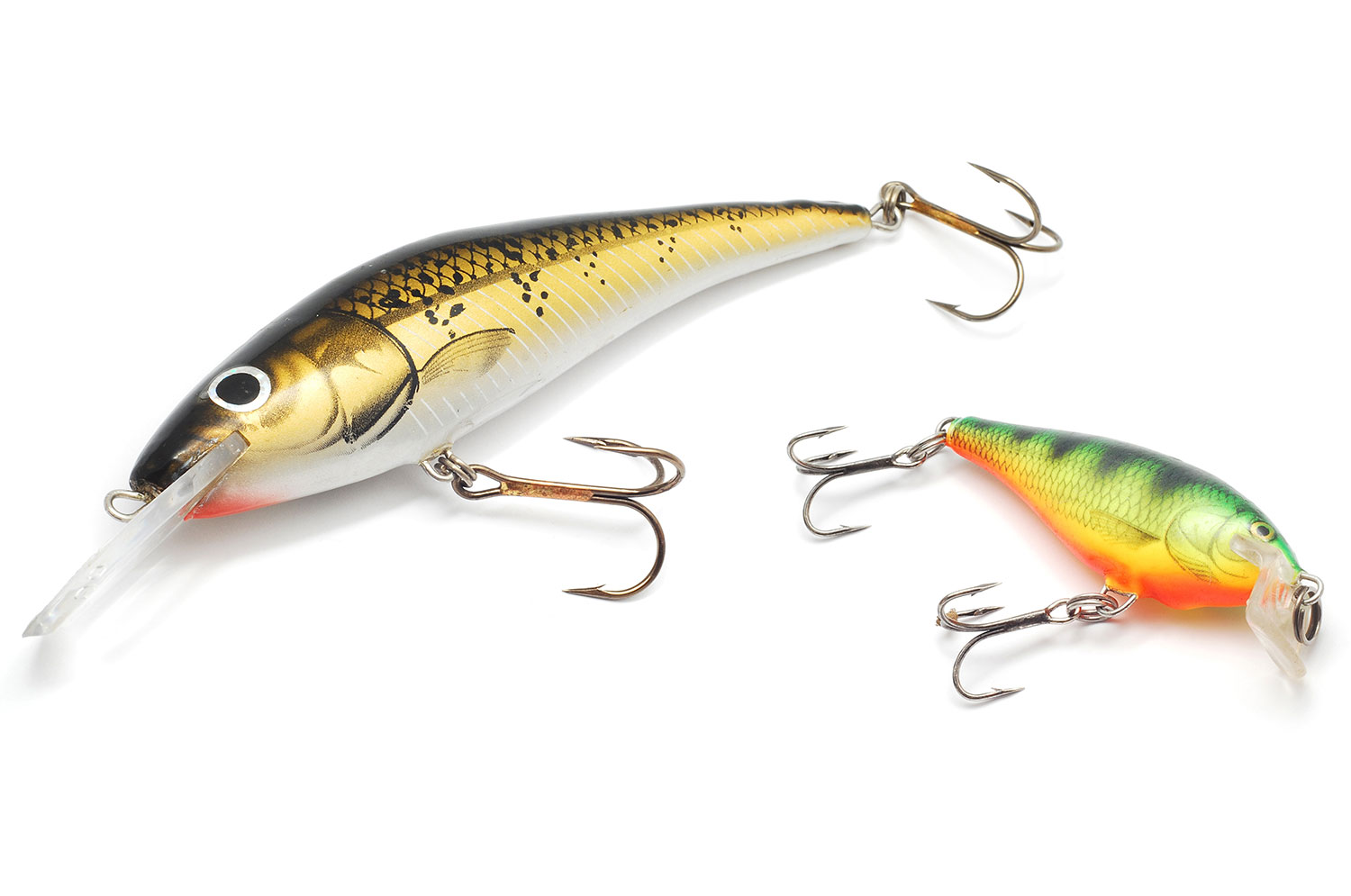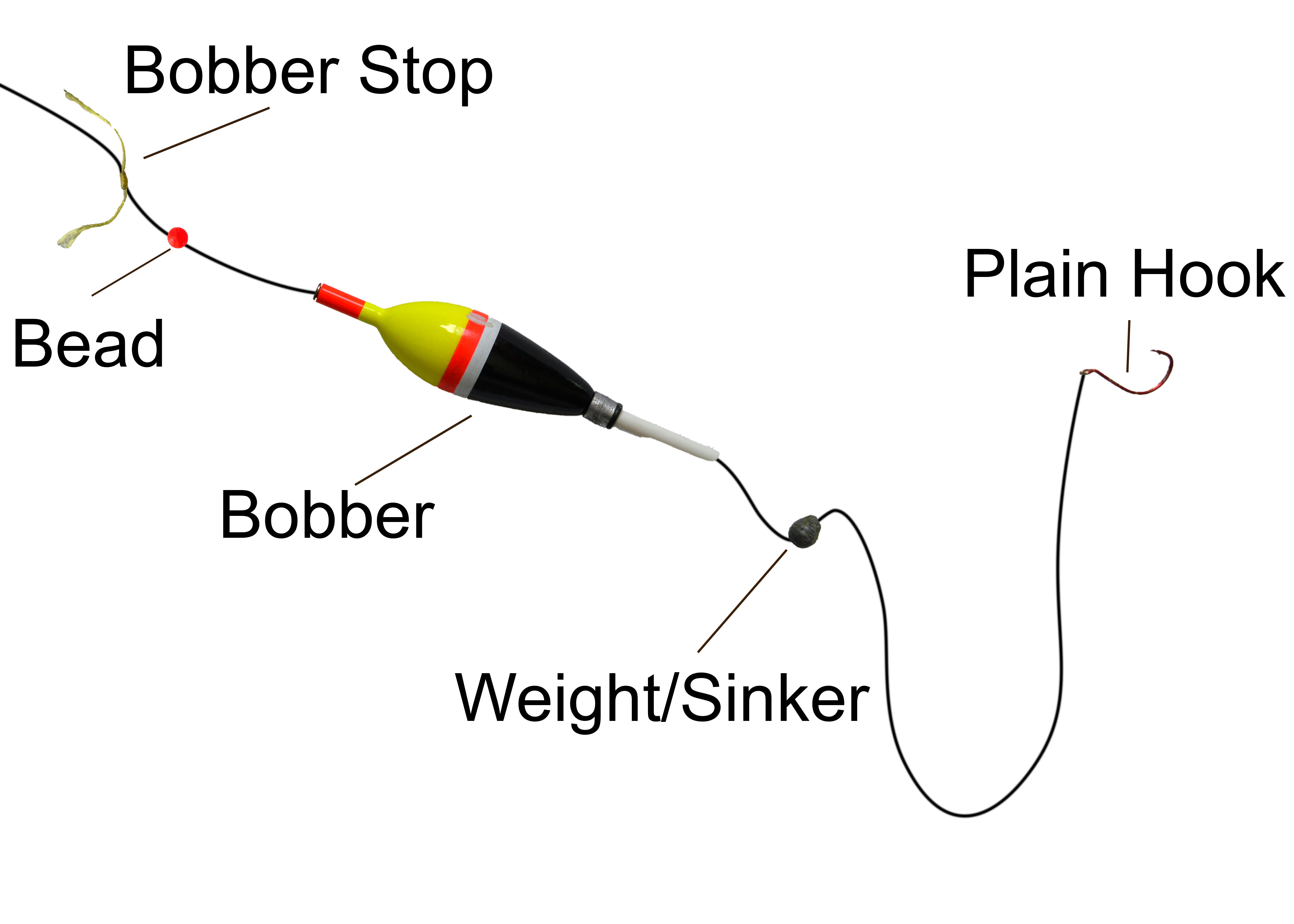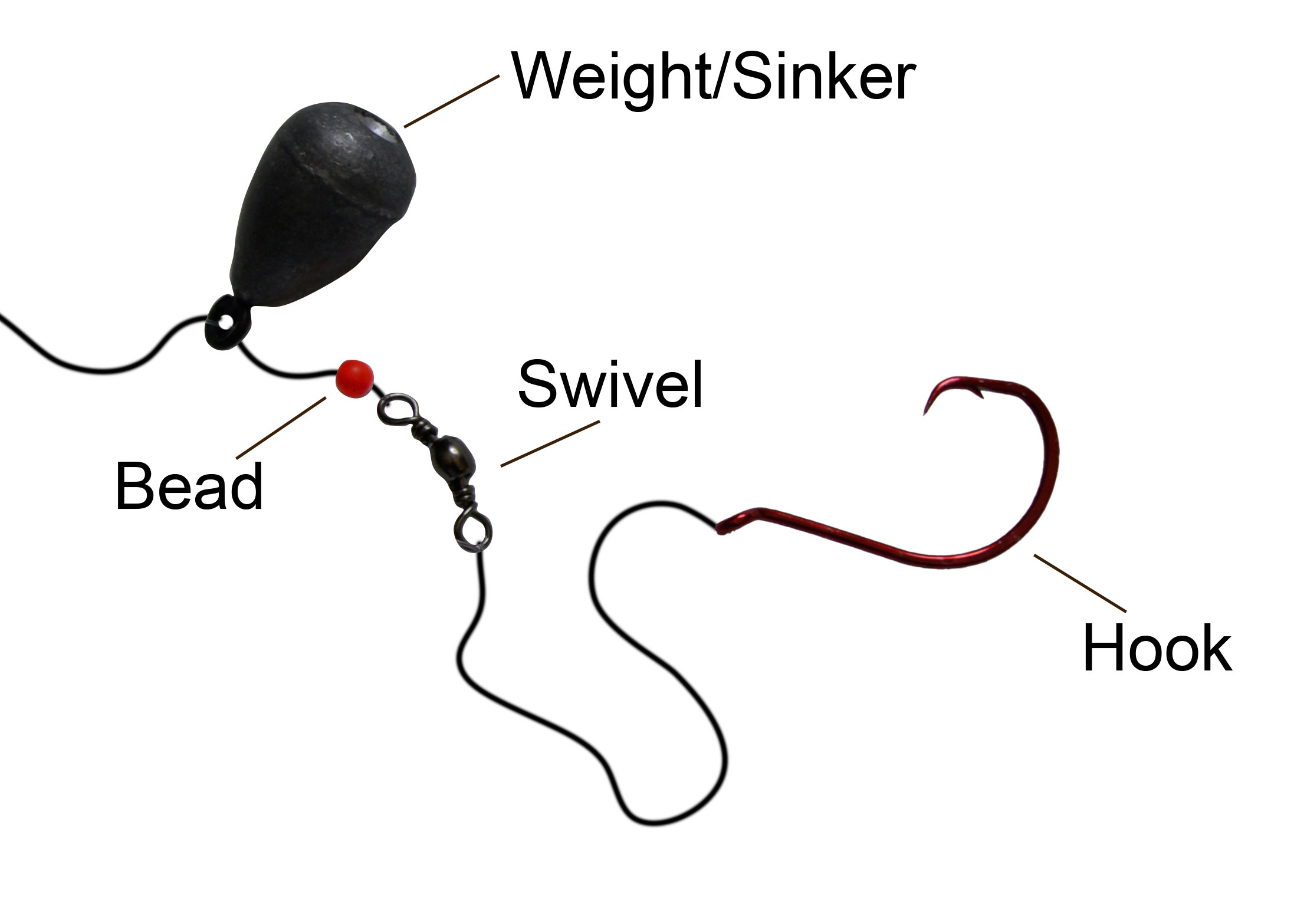Open-Water Tackle
Hooks
Type: There are different types of hooks designed for different baits and fish.
- Octopus Hook: The most standard and versatile hook, easy for baiting worms, leeches or minnows for a simple and natural presentation. Use with a bobber rig for many fish species.
- EWG Worm Hook: Also known as a “offset wide gap,” this hook is commonly used with artificial plastic baits when fishing for bass.
- Aberdeen: Another basic and versatile hook with a longer and straighter shank than the octopus hook and often made of lighter wire. Can still be paired with a bobber. It’s well-suited to thread worms or night crawlers on the hook, and the long shank makes it easy to grab with a pliers and remove the hook from small-mouthed fish, like bluegills.
- Treble Hook: These hooks are 3-in-1 and often used for larger or aggressive fish that may be able to easily get off one hook (e.g. bass, northern pike, muskies, etc.). They’re commonly found on lures such as crankbaits or inline spinners. Large treble hooks are effective for larger baits, such as smelt, by hooking one of the barbs into your bait and leaving the other barbs exposed to hook large predatory fish, like northern pike.
Size: The sizing starts in the middle at size 1 and works its way out. Smaller hooks size from 1-30 with 30 being the smallest and larger hooks size from 1/0 - 27/0, pronounced “27 aughts.”
Cost: $3 - $10+
Most Versatile
Aberdeen hook or octopus hook under a bobber with a worm or nightcrawler as bait
Sinkers
Type: There are different types of sinkers designed for different rigs, baits and fishing type.
Weight: Sinkers come in a wide range of weights depending on your use commonly from 1/32 oz up to multiple ounces.
*Depth, current, wind conditions and its intended use can all influence the weight you’ll want/need. Having a variety of sizes will help you adjust as needed.
Pair size 1-5 (1/8-1/16 oz) split shot with a hook on your bobber rig and/or use a ¼ - 1 oz egg or dipsey sinker with a slip rig. No roll sinkers can be ideal for rivers because they’re flat and less likely to roll in the current than egg, dipsey or bank sinkers.
Cost: $1.5 - $5
Most Versatile
Split shot and dipsey sinkers (1/8 – 1 oz)
Bobbers
Type: There are slip and fixed bobbers. Slip bobbers allow line to pass through it until it hits a “bobber stop” (a small colored knot on your line) and bead –this is ideal when fishing in depths where you want your bait to be > 4’ deep. Fixed bobbers are clipped on the line and remain in place, they are perfect when you only need to put the bait a few feet down.
Size: Bobbers come in variety of sizes depending how much weight you need it to hold up
Cost: $1.50 - $6
Most Versatile
A few sizes of each and bobber stops and beads
Swivels
Help you to connect different components of a fishing rig together.
Size: Swivels come in variety of sizes depending on what type of line and fishing you’re doing
Cost: $2+
Most Versatile
Sized 3-7
Bait
You can bait hooks with wax worms, worms, leeches, live minnows, dead minnows, or artificial baits made of plastic.
Cost: $1+
Most Versatile
Earthworms or night crawlers are the simplest bait to use and care for. They’re easy to hook and work for a variety of species. Hook on a bobber, slip rig, or jig to catch bluegill, trout, bass, walleye, pike, catfish and more.
Jigs
Jigs are a simple and effective way to fish for many species of fish including trout (use a small light jig), sunfish, bass, and walleye (use a jig that can hit the bottom in the depth and wind conditions).
Cast the jig, let it sink, and then reel a few times and repeat to slowly retrieve the jig and cast again. This is a more active way of fishing than a bobber or slip rig that you let sit and sometimes preferred over static rigs if fish are more active or aggressive that day.
Size: Jigs come in a wide range of weights depending on your use commonly from 1/32 oz. up to multiple ounces
Cost: $2+
Most Versatile
1/4 oz. jig in a variety of colors
Lures
Lures come in variety of lengths, weights, buoyancy levels (floating, suspending, etc.) and many colors and patterns.
Lures are sometimes an easy and effective way to fish for walleye, bass and pike. While there are many ways to retrieve lures, crank baits can simply be casted and reeled in.
NOTE: If planning to use lures you should definitely have a pliers with you to safely remove their treble hooks from fish.
Cost: $4+
Most Versatile
2-3 inch floating perch-colored or gold crank bait
Common Fishing Rigs
Hook and Bobber
Sets bait a certain depth, ideally use live bait that moves around a little.
Slip Rig
The basic idea is to get live bait on some sort of hook to the bottom, adding a float before the hook will make it sit just off the bottom.
Jig
A simple and versatile rig, you can add a worm, leech, minnow, or one of the many artificial baits like curly-tailed plastic grubs. This rig involves casting and retrieving the jig while pausing to let it sink in between reeling.

